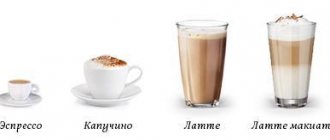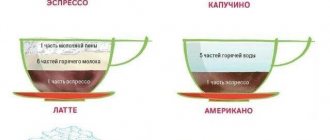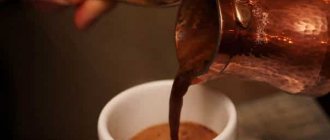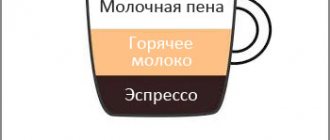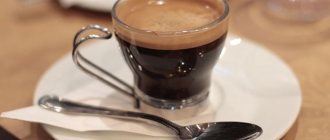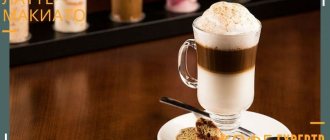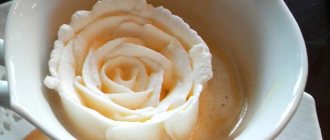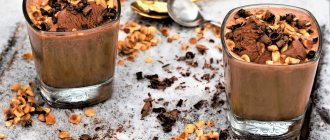Glasse stress on which syllable
The word glace comes from the French word glacé - glasse, the translation means icy. The specificity of the French language is such that most words are pronounced with emphasis on the last syllable.
Therefore, according to the rules of the Russian language, borrowed foreign words are not transformed, but are pronounced and written as closely as possible to the original. That is, in the word glasE the stress falls on the last syllable.
Origin and meaning
There has been debate for a long time about the origin of this drink: some consider France to be the birthplace of the glass, others – Austria, and still others – Italy. Supporters of Austrian origin say that it is in this country that the most ancient recipes for its preparation have been preserved. The Italians believe that they invented the drink. This can be believed, since the Italians, due to the warm climate, might need such a cooling drink. But the term “glasse” itself is French.
The word Glace is French for "ice cream", "frozen" or "icy". The drink received this definition due to its composition. 25% of the coffee volume is ice cream or ice cream. However, there are many cooking options, each of which is delicious in its own way. It may contain ice, milk and egg yolks. Grated chocolate, coconut flakes, cocoa, candy crumbs or cinnamon can also be added if desired.
Conclusion
- A dessert drink based on chilled coffee.
- It has a low strength and high calorie content.
- You can drink it in the evening.
- The taste is pronounced coffee, but the aroma of coffee is almost absent.
- Good as a dessert cocktail during the hot season.
- More like a treat than coffee.
Do you like iced coffee?
You can call Glasse coffee a unique cocktail. This is an amazing mix of everyone’s favorite invigorating drink and delicate creamy ice cream. A real coffee dessert that has earned the vocation and love of gourmets around the world.
It’s quite simple to explain what Glass coffee is. This is a drink that includes cold espresso and a scoop of ice cream.
It is generally accepted that he appeared in Austria. Local bartenders even tell a story about how one day a young guy ran into a small cafe. He was late for a very important meeting, but wanted to have a cup of coffee first. The employee of the establishment did not have milk on hand. He, wanting to help out the young coffee lover, replaced the usual ingredient with creamy ice cream.
The client was delighted with the original drink. He came for another cup of treats immediately after the successful meeting. And since then I began to often order the delicacy, and even tell my friends about it.
Traditional composition of iced coffee
Classic composition of Glass coffee. It includes only two main ingredients - already brewed espresso (sweet) and creamy ice cream.
Of course, over time, the traditional recipe has been repeatedly changed and improved. In modern coffee shops you can even try egg or fruit glasse. The choice will depend only on the tastes of the coffee lover himself.
Pronunciation and spelling
In French, it is customary to place the stress on the last syllable of a word. This rule also applies to the word “glaze”.
Residents of countries where stress can fall on any vowel, as in Russian, often distort this word. To pronounce glasse correctly, you need to take into account the norms of the language from which this word comes. The emphasis on “e” creates a special charm for the name and adds a French flavor.
The problem with pronouncing the name is as common as in the case of latte or espresso. For example, latte is a word of Italian origin, so the stress should fall on the first syllable. Incidents also happen with espresso. Some are accustomed to adding the letter “k” in the French manner.
As a rule, “glace” is written with two “s”, but in the original only one letter is used. That is why many philologists insist on writing the name without double consonants. Both options have a right to exist and are considered correct today.
Some people like to change the vowels in the name of the drink. Quite often the “glasse” option is used, and sometimes even “glissé”. Both options are incorrect and will most likely be misinterpreted by the waiter. If the name of the drink was written in this way on the menu, you can safely say it was a mistake.
We also recommend reading: Where to put the emphasis in the word coffee.
Source of the article: https://cupstea.ru/o-kofe/udarenie-v-slove-glyasse.html
Setting priorities: the emphasis on the word latte
Correct pronunciation will be a great addition to a delicious drink in the morning. Let's start with the emphasis. Quite often, baristas hear an incorrect order for a coffee drink, but no one dares to correct it. After all, the client is always right.
So latte or latte? It should be remembered that the stress should be placed on the first syllable in a word. That is, the correct way to pronounce the name of coffee is Latte. This option is the correct one. And to be sure, you should understand the origin of the name of the drink.
Which syllable is stressed in the word?
Many people pronounce "latte" with the wrong accent. To make sure it’s correct, let’s reveal the secret of the origin of the name. From Italian the translation of latte sounds like milk. This ingredient is the main one in the recipe for making a delicious drink.
Opening the dictionary
To correctly pronounce the names of coffee, it would be a good idea to look into your usual spelling dictionary. The emphasis in the word latte is on the first syllable. The entry in the dictionary is also confirmation. The Italian origin of the lexical unit determines this stress variant. In this language, the vowel on the penultimate syllable is stressed.
Rules for preparing ice cream
The classic recipe calls for mixing ice cream with coffee cooled to a temperature of +10 °C. However, this is dangerous to health: in the heat it is easy to become hoarse or even get a sore throat. It is much safer to cool the coffee base to +20 °C.
If you want to treat yourself to dessert in inclement, cool weather, then a temperature of +30 °C is also allowed. Hotter coffee makes the ice cream melt faster, but some people prefer that flavor. It should be remembered that too much temperature difference is harmful to tooth enamel.
In order for the black coffee to have time to cool, it is recommended to brew it in advance, at least 20–40 minutes before preparing the ice cream. Hot liquid cannot be placed in the refrigerator, so the vessel with strained coffee is first placed in a large container of cold water. In such conditions, the coffee quickly cools to room temperature. To speed up cooling, change the water in the container every 5–10 minutes.
There are two options for preparing glace:
- Coffee is poured into a glass and a scoop of ice cream is placed on top.
- Ice cream is lowered to the bottom and coffee is poured over it.
In the first case, the drink looks very impressive: on top of the dark brown layer there is a snow-white melting ice cream, streams of which are already beginning to seep into the coffee. In the second option, a ball of ice cream floats to the surface, turning the liquid beige. As a result, the coffee is no longer as beautiful.
It is customary to mix the ice cream just before serving so that the ice cream does not start to melt.
Cappuccino or cappuccino: how to write correctly
Once we've figured out the correct accent in a latte, it's time to make sure how to not only correctly pronounce the names of coffees, but also write them, for example, cappuccino. This name is also borrowed from Italian.
You can come across a legend that the word “cappuccino” comes from the famous order of Capuchin monks. They wore a long brown robe with a pointed hood. Allegedly, it was members of this order who added milk foam to coffee. The version has a right to exist, since “cappuccio” is translated from Italian as hood.
In foreign languages, this word is written with two letters “p”, “c”. In Russian, as a result of simplification, the correct spelling should be “cappuccino”.
But we should not forget that in professional literature you can find the spelling with two “h”.
According to Wikipedia, both options are considered correct. But you can’t write the name of this drink with two letters “p”.
If you're in doubt about how to spell a latte, be sure to write two "t's." Many people also often have difficulties with espresso and expresso. The first option is correct.
You can find out the best latte recipes at home without a coffee machine here.
Ingredients for the ice cream
The basis of the glace is black coffee, no matter how it is prepared: in a coffee maker, Turk, French press, Aeropress or using a pour-over. You can even use instant coffee.
The classic ice cream recipe requires a ratio of 1:3 (1 part ice cream – 3 parts coffee). But it is not necessary to strictly observe this ratio; a ratio of 1:2.5 or even 1:2 is allowed. A serving of glace is usually 150–200 g. It is clear that 100–150 ml of espresso is too much and unhealthy. Therefore, if espresso is chosen as the basis for the glace, it is better to brew 60 ml of coffee and dilute with water to the desired volume (the result will be an Americano).
Choosing coffee for ice
Ice cream gives the drink a creamy softness, accentuates the bitterness, but neutralizes the subtle shades of taste and smell of single-origin Arabica beans or expensive blends. Making glace is a great way to use up ground coffee that has been sitting in the cupboard for more than 2 weeks and has lost some of its flavor.
Inexpensive blends of Arabica with 10% Robusta are suitable for glace. For those who do not like excessive bitterness, it is recommended to brew the base for the glace from 100% Arabica coffee. In a drink with instant coffee, the bitterness is not felt, but the taste of such a glass is not for everyone.
Water for ice
Although the taste of ice cream dominates in the glace, you should still not brew coffee with tap water: the chlorine it contains significantly worsens the taste of the drink. When purchasing bottled water, you need to ensure that the mineralization is in the range of 70–200 mg/l (optimally 150 mg/l).
Ice cream for glaze
The glaze tastes best with creamy ice cream. The original taste is iced with chocolate ice cream or creme brulee. Of course, you can make the drink with less-calorie dairy ice cream, but it won't be nearly as enjoyable.
Often used ice cream or creme brulee
It’s still impossible to make iced coffee with diet coffee. So even for those who are watching their figure, it makes no sense to count the calories in ice cream; it is better to drink a portion of the drink with a sundae, and then give up dinner or devote an hour more to training.
How to correctly pronounce the name of coffee - iced or glace
The word "glace" came into our language from French. And on the Internet, of course, there are rules and selections from the dictionary on how to correctly write and pronounce the name of everyone’s favorite coffee drink.
This exquisite word is translated as “frozen”. Most words in French have stress on the last syllable. "Glyase" is no exception, while in "latte" the emphasis is on the first syllable.
But despite the origin of the word, they believe that such a delicacy was invented not in France, but in Austria, by combining freshly brewed coffee with ice cream.
Information from the Russian spelling dictionary confirms that, according to the rules for writing words of foreign origin, “glase” should be written with one “s”. And this is the only correct option.
But on the network, namely on Wikipedia, you can find other options. For example, the authors of this source are not so categorical and fully allow spelling with both one and two letters “s”. Therefore, do not be surprised if you come across “glace” and “glace” on the Internet.
But don’t forget about the original version of “glace”. That is, in the French word there is also only one letter “s”. Therefore, it is not surprising that there is no doubling in the Russian language. The best detailed recipes for making classic glaze can be found here.

